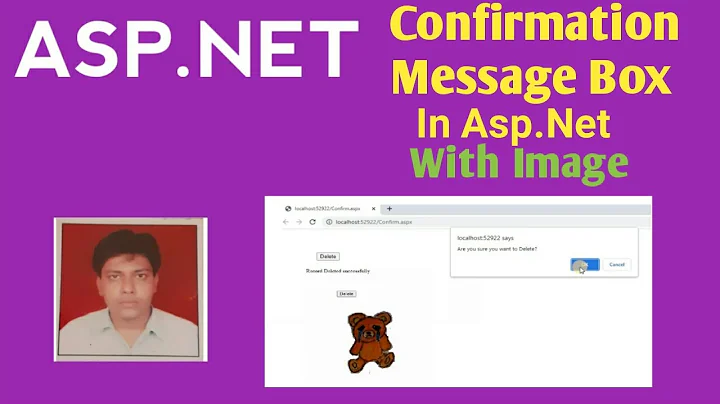Confirmation Message BOx function for asp.net?
15,116
I guess it depends where you're putting your RegisterStartupScript code block. Ideally you want the click confirmation all on the client-side rather than anything server-side.
So on the button the user clicks to delete, you want a client-side click handler (if it's a server-side button, the event is onClientClick) that calls a function that returns the result of the confirm() call. Something like this:
<asp:Button ID="lnk_delete" runat="server" onClientClick="return fnConfirmDelete();" onClick="lnk_delete_Click">Delete</asp:Button>
<script language="javascript" type="text/javascript">
function fnConfirmDelete() {
return confirm("Are you sure you want to delete this?");
}
</script>
The use of the two return statements ensures that if the user presses cancel the submission doesn't go ahead (i.e. the button click is cancelled).
Related videos on Youtube
Comments
-
 WeakTaenie about 2 years
WeakTaenie about 2 yearsThis is my
Deletefunction after a click. Can anyone show me how to do a simple confirmation function?ASP.net C#.
Previously I had this
ScriptManager.RegisterStartupScript(this, this.GetType(), "script", "confirm('Are you sure you want to Delete Your Discussion?');", true);but the above code run after the deletion has been made.
protected void lnk_delete_Click(object sender, EventArgs e) { GridViewRow grdrow = (GridViewRow)((LinkButton)sender).NamingContainer; string fieldID = grdrow.Cells[0].Text; string query = "Delete from Comment where DiscussionID=@id"; SqlCommand cmd = new SqlCommand(query, cn); cmd.Parameters.AddWithValue("@id", fieldID); cn.Open(); cmd.ExecuteNonQuery(); cn.Close(); string query1 = "Delete from Discussion where DIscussionID=@id"; SqlCommand cmd1 = new SqlCommand(query1, cn); cmd1.Parameters.AddWithValue("@id", fieldID); cn.Open(); cmd1.ExecuteNonQuery(); cn.Close(); GridView1.DataBind(); }







